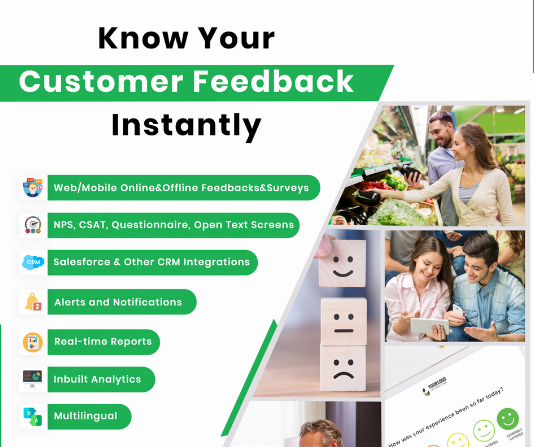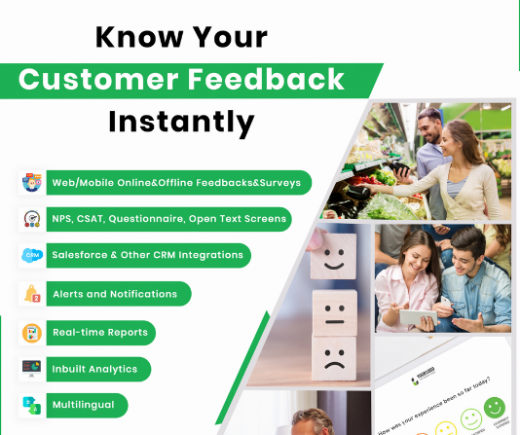10 Tips to Create Effective Customer Surveys During COVID-19
10 Tips to Create Effective Customer Surveys During COVID-19

Whether you have a small business or a big one, or you run a non-profit organization, a customer survey is the most effective methods to gain insights. A survey will reveal your customers’ likes, dislikes — your survey will detail a customer’s needs. While you are stuck at home during the COVID-19 quarantine, take some time and build a fantastic survey to catapult your business forward.
Providing a survey will be the quickest way to expose the loopholes of your business strategies.
Customer surveys allow businesses to provide astounding customer experience. However, to achieve this goal, you have to know how to use your customer feedback tool properly.

Here are the 10 amazing tips you can use to create an effective customer survey for your business.
-
Clarify Your Survey’s Objectives.
When you are creating a customer survey, the first thing that you need to do is establish what you need to find out. The objective of your survey will regulate your questions, as well as your target audience. If you do not have clear objectives, you would not get clear results. While creating questions, you must keep your target audience in your mind. This helps the audience to relate to the answers to the questions and give the perfect response.
-
Use the Preferred Channel of Your Customer.
Determining the preferred channel of your customer is a crucial factor. The preferred channel of your customer depends on the requirements of your survey. That is, whether the survey requires a formal response or a casual one. For example, a formal channel is when a customer directly reaches out to a specific service to explore. Whereas, a casual survey is a comment on a Facebook post. The most popular channel will provide you with the best results.
-
Write Straightforward and Clear Questions.
Your survey can be highly disliked by your customers if the questions are poorly formed. You must ensure that you use clear questions that are not hypothetical, do not contain difficult concepts, are not leading, and free from bias. You can start with neutral and meaningful questions that are easy to respond to. After that, you can gradually move towards your main goal.
-
Send Surveys for Different Purposes and at Varying Intervals.
The purpose of your survey will determine its frequency. If you want your survey to succeed, then you need to send them with different purposes at irregular intervals. You can use the post-contact survey. Here, the customer generally agrees in receiving the survey at the end or start of a methodical touch-point. Hence, you get the chance to personalize your customer experience by looking through customer history. Use periodic surveys if you are launching a new product or service.
-
Stay Focused on the Point.
Keeping the survey short and sweet is the best way to minimize the abandonment rate. Ensure that your survey does not explore multiple matters. Only ask 10 to 12 questions. However, if you want a more detailed survey on a topic, then send your audience a follow-up survey. Provide your audience with the estimated time of completion and the number of questions before the survey begins.
-
Keep it Concise and Relevant.
The perfect way to increase your response rate is by keeping the survey concise and relevant. Make the response in a ‘yes’ or ‘no’ form so that your audience does not feel stuck with your survey. You can also formulate the survey in the form of rapid-fire to keep your customers engaged.
-
Analyze Surveys by Department and Agent.
It is always advisable to collect as well as analyze your survey data by departments and agents. Through this, you can streamline the utility of specific departments. This also helps in narrowing down the problematic areas so that more targeted solutions can be used for resolving the issues. Whereas, analyzing on agent level helps in identifying an individual’s performance issues. This way, you would be able to train your agents better and make the customer support programs finer.
-
Contact Audiences with Low Satisfaction Rates.
Make your agents contact those audiences who have low satisfaction scores. A more humanized approach will make your customers feel appreciated. This will make them feel that their feedback matters and is taken seriously. Even customers facing minor issues should be contacted to improve the performance of your brand.
-
Send Personalized Acknowledgements.
This is the most effective tip that you can use. Always ensure that you thank your respondents as well as acknowledge their feedback in a personalized manner. Addressing the respondents by their name and sending them a simple acknowledgment message would help you to build a relationship of love and trust between you and your customer.
-
Be Smart with Timings.
If you want to get more accurate responses, then you have to send out surveys at regular intervals. This helps the targeted audience to recall the quality and experience they had with the recent interaction. Hence, try to send surveys when you are still fresh on their mind. Sending a survey every 24 hours is the perfect window of time.
A customer survey can make or break your tech business. Incorporating any of these tips on your next customer survey will help you to get the required insight on your customers and provide them with better services or products
The post 10 Tips to Create Effective Customer Surveys During COVID-19 appeared first on ReadWrite.
(15)


